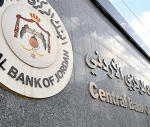You are here
Oil's bull run hides a deep disconnect, crude traders warn
By Reuters - May 06,2015 - Last updated at May 06,2015

LONDON — Oil prices rose to 2015 highs on Wednesday, as a month-long rally gained further impetus from the first fall in US crude stocks since the beginning of January.
Brent crude was up $1.60 to $69.12 a barrel by 1442 GMT, after hitting a 2015 peak of $69.63.
US crude traded $1.54 higher at $61.89 a barrel, near an intraday high of $62.58.
"Bulls are in control of the market," said Tamas Varga and Stephen Brennock, analysts at London brokerage PVM Oil Associates, in a note on Wednesday.
The US government's Energy Information Administration (EIA) said crude stocks fell 3.88 million barrels to 487.03 million barrels, the first stock draw since the beginning of January and more than double the 1.5 million barrel draw reported by the American Petroleum Institute on Tuesday.
Stocks at the key delivery point of Cushing, Oklahoma fell for a second straight week by 12,000 barrels to 61.67 million barrels, easing fears of storage hitting tank tops.
"It's a big bullish crude draw," said Dominick Chirichella, senior partner at the Energy Management Institute in New York. "Lower imports seem to be the main driver for the draw down."
Oil prices also had support from the dollar, which fell by more than a per cent against a basket of currencies, on course for a fourth straight weekly loss.
A weaker dollar makes dollar-priced commodities such as crude oil more attractive for holders of other currencies.
While Yemen is only a small oil producer, it sits on major shipping routes and any conflict involving its neighbour Saudi Arabia, the world's leading oil exporter, shakes the market.
Oil's rise in May followed a 20 per cent rally for Brent and 25 per cent for US crude prices in April, despite indications that the Organisation of the Petroleum Exporting Countries (OPEC) may keep production unchanged at current high levels at a meeting next month.
While oil futures rebound with vigour, traders warned of a deep disconnect with the physical market where a lack of demand has left tens of millions of barrels unsold.
Analysts from London-based Energy Aspects consultancy said the bull market would run out of momentum, citing "dire" fundamentals in the near term.
"We maintain our view that even though $70 seems likely in the short term, a downward correction is still on the cards," they said in a note.
While oil futures prices rebound with vigor as analysts cite strong demand, the physical crude market tells a much more cautionary tale.
Tens of millions of barrels are struggling to find buyers in Europe with traders of West African, Azeri and North Sea crude blaming poor demand.
The deep disconnect between the oil futures and physical markets looks similar to the events of June 2014 when the physical market weakness became a precursor for a futures price crash.
"Being large physical buyers of crude we have a direct pulse of the market and feel immediately when it is well supplied, as is happening now," Dario Scaffardi, executive vice resident and general manager of independent Italian refiner Saras, told Reuters.
"In the short-term, futures prices do not necessarily reflect accurately the physical market," he said.
Benchmark Brent oil futures prices more than halved between June 2014 and January 2015 after OPEC refused to cut output and instead chose to undercut more expensive producers, including a booming US shale oil sector.
But since January's lows of $46 per barrel, prices have risen back to $69 per barrel on Wednesday on fears the output in the United States would fall deeper than expected and on signs of a faster-than-expected demand rise across the world.
However, data from OPEC and the International Energy Agency show the world is still pumping 1.5 million barrels per day more crude than it consumes. Traders say they are seeing increased evidence of crude barrels struggling to find a home.
Traders in Azeri Light crude, usually one of Europe's favourite grades due to its high quality, said some 10 cargoes from the May tanker loading programme are struggling to find buyers, just two days before June volumes are due to go into the market.
As a result, the Azeri price premium to benchmark dated Brent is the weakest since December, when it hit a five year low.
In the North Sea, Norwegian Ekofisk crude fell to its weakest since August last year due to a significant number of unsold May cargoes, despite June programme already trading.
The worst situation, however, is in Angolan and Nigerian crude, which has struggled in the past two years due to the US oil boom.
Traders said around 80 million barrels of Nigerian and Angolan crude oil are on the market with at least a dozen May-loading cargoes still available.
Indian refiners, which had bought large quantities of Nigerian oil in March and April, are now turning to cheaper Iraqi Basra and Venezuelan crudes.
"Near term oil market fundamentals continue to look dire, particularly in the Atlantic Basin, with Nigerian, Mediterranean and North Sea differentials all weak," analysts from Energy Aspect said on Wednesday.
Pushing the mythic rock uphill
There is no guarantee oil futures will definitely follow the physical market as they did after June 2014.
A number of unknowns could take oil prices either way. A failure to reach a nuclear deal between Iran and the West in June will reduce the likelihood of increased supplies from the Islamic Republic and therefore give prices some support.
The ex-boss of BP, Tony Hayward, said last month the withdrawal of capital and workforce from the US shale oil industry was so steep that a new oil price bull market may come much quicker than expected.
Others argue that shale producers have become much more efficient in recent months and can switch production back on as soon as prices reach $70 per barrel.
The head of oil trading house Vitol, the world's largest, Ian Taylor, said he saw another dip in oil prices soon.
On the demand side, the biggest unknown is whether China will resume buying large volumes of oil for its strategic reserve in the second half of the year.
However, an increasing number of market watchers agree that the fundamentals point to what should be a more bearish market, at least until either supply is cut or demand increases.
"We cannot help but compare the current price strength to the myth of Sisyphus," said Tamas Varga from PVM oil brokerage.
"The top of the current bull mountain might not be close but unless there is a fundamental change in the physical supply/demand balance, the rock might start rolling back down shortly again just like it did in the second half of 2008 and 2014 only for the bulls to start the arduous uphill battle all over again," he added.
Related Articles
LONDON — A sales push by Saudi Arabia into north Europe's refineries, a step into rival Russia's backyard, piles fresh pressure on oil price
Brent crude oil plunged as much as $6.50 a barrel on Thursday, and US crude fell by nearly as much, posting the steepest one-day falls since 2011, after Organisation of the Petroleum Exporting Countries (OPEC) decided against cutting output despite a huge oversupply in world markets.
Oil tumbled to six-year lows Tuesday on global oversupply and after Saudi Arabia, kingpin of the Organisation of Petroleum Exporting Countries (OPEC) said the era of $100 crude was over, analysts said.


















